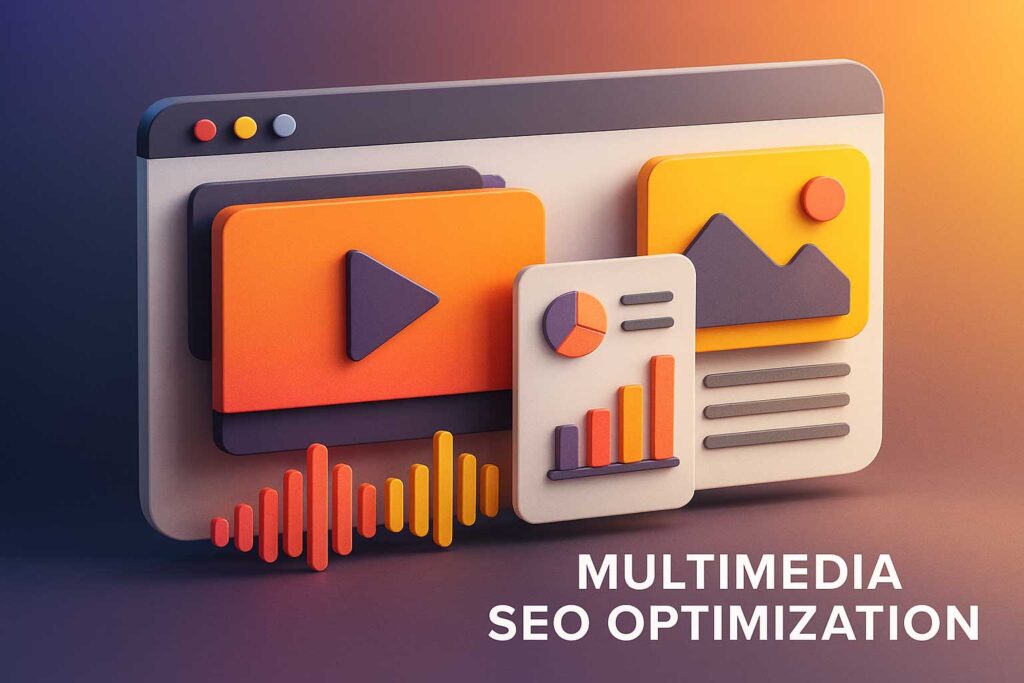Multiple Media Types — The Complete SEO Guide for Multimedia Content Optimization
Understanding Multiple Media Types in SEO
In the world of digital marketing, multiple media types refer to using a mix of images, videos, infographics, podcasts, and interactive visuals to enhance a website’s content.
Modern search engines like Google value websites that provide rich user experiences, meaning text alone is no longer enough.
Using diverse media formats helps you:
- Increase user engagement and dwell time
- Boost click-through rate (CTR) from search results
- Improve mobile and voice search optimization
- Enhance content comprehension and retention
💡 Optimize your metadata for multimedia posts using the Meta Tag Generator to ensure every media-rich page is crawlable and SEO-friendly.
Why Using Multiple Media Types Improves SEO Performance
Integrating different media types strengthens your website’s SEO by improving both user experience and technical ranking signals. Here’s how:
- Improved User Engagement: Videos, infographics, and visuals increase on-page time.
- Enhanced Accessibility: Multimedia caters to different learning styles.
- Faster Information Delivery: Visuals convey complex ideas instantly.
- Boosted Social Sharing: People share visual content more than text.
- Higher Ranking Potential: Google prioritizes multimedia-rich content.
💡Before publishing, run a Keyword Density Check to ensure multimedia captions, alt tags, and descriptions are keyword-balanced.
How to Optimize Multiple Media Types for SEO
Image Optimization for SEO
Images can significantly improve page quality and engagement when optimized correctly.
Here’s how to make your images SEO-ready:
- Use descriptive file names (e.g., seo-image-optimization.jpg)
- Add ALT tags with target keywords
- Compress images without losing quality
- Use next-gen image formats like WebP
- Implement structured data for image indexing
💡Test your image-heavy pages for performance using the Page Speed Checker to ensure fast loading across devices.

Video Optimization for SEO
Videos build trust and keep users engaged longer. When properly optimized, they can rank on both YouTube and Google Search.
Steps to optimize videos:
- Upload to YouTube or host on a fast CDN
- Add SEO-friendly titles and descriptions
- Include transcripts for accessibility
- Use schema markup for video content
- Embed videos naturally within relevant text
💡Use the Backlink Maker to build backlinks to your YouTube or video pages for higher visibility.
Infographics and Visual Data SEO
Infographics are powerful for generating backlinks and driving organic shares.
To make infographics SEO-friendly:
- Use descriptive titles and meta descriptions
- Optimize image file names
- Offer embed codes for others to share
- Link to related blog posts or resources
💡Monitor backlink quality for your infographics using the Backlink Checker.
Audio and Podcasts SEO
Audio content, like podcasts, increases accessibility for users who prefer listening.
To optimize audio files:
- Add transcriptions for crawlers
- Include keyword-rich descriptions
- Host on platforms like Spotify or Apple Podcasts
- Embed players with structured data
💡Generate redirects and manage your podcast URLs efficiently with the Htaccess Redirect Generator.
Interactive Media (Slides, Tools, Quizzes)
Interactive media such as tools, quizzes, or sliders significantly increase dwell time.
They encourage user participation and signal positive engagement to search engines.
💡Create linkable interactive content and monitor your site’s domain strength using the Domain Authority Checker.
Combining Media for a Powerful SEO Strategy
To achieve the best results, integrate text + visuals + video + interactive elements into a single strategy.
A balanced mix helps attract different audiences and supports various ranking factors simultaneously.
Example:
- Blog post → includes images + embedded video
- Infographic → summarizes main points
- Podcast → expands discussion in audio form
💡Use our Keywords Suggestion Tool to identify content ideas for multimedia posts.
Common SEO Mistakes When Using Multiple Media Types
| Mistake | Consequence | Fix |
|---|---|---|
| Large file sizes | Slower load speed | Compress with WebP |
| Missing alt tags | Poor accessibility | Add descriptive tags |
| No transcripts | Lost keyword opportunities | Add transcripts for videos |
| Overloading media | Cluttered layout | Use clean structure |
| Missing schema | Lower visibility | Add proper markup |
💡Use the Broken Links Finder to ensure media embeds and outbound links remain active.
multiple media types, multimedia seo, optimize videos for seo, image optimization, visual content seo, add multimedia to website, seo for videos and images, how to improve dwell time, multimedia content marketing, small seo tool
Here you get answer for
- “How to Optimize Images, Videos, and Infographics for SEO”
- “Best Practices for Multimedia Content Optimization”
- “Using Multiple Media Types to Improve Engagement”
- “How Videos and Infographics Boost Organic Rankings”
- “SEO Benefits of Using Multiple Media Types in Content Marketing”
💡 Refresh older multimedia pages using the Article Rewriter to maintain keyword freshness and SEO value.
Frequently Asked Questions (FAQ)
Q1: What are multiple media types in SEO?
They refer to using a mix of images, videos, infographics, audio, and interactive elements to make content more engaging and search-friendly.
Q2: Why does Google favor multimedia content?
Google rewards user-focused experiences. Multimedia helps users understand and stay longer, improving engagement metrics that influence rankings.
Q3: How do I optimize videos for search engines?
Use keyword-optimized titles, include transcripts, add schema markup, and ensure video loading speed is fast.
Q4: Do images affect SEO rankings?
Yes. Properly optimized images can improve page load time, accessibility, and visibility in Google Images.
Q5: Should I include transcripts for audio or video content?
Absolutely. Transcripts make your media searchable and help search engines understand the content contextually.
Free Seo Tools
- Meta Tag Generator
- Article Rewriter
- Plagiarism Checker
- Keyword Position Checker
- XML Sitemap Generator
- Backlink Maker
- Page Speed Checker
- Keyword Density Checker
- Broken Links Finder
- Keywords Suggestion Tool
- Domain Authority Checker
- Htaccess Redirect Generator
- Backlink Checker
Conclusion
Using multiple media types isn’t just about aesthetics — it’s a powerful SEO tactic that improves engagement, content retention, and ranking potential.
By optimizing each media type for speed, metadata, and keyword relevance, you make your site more valuable to both users and search engines.
Combine rich visuals, sound, and interactivity to turn your pages into high-performing multimedia experiences.
Start optimizing today with Small SEO Tool’s free SEO tools to ensure every image, video, and infographic works toward your ranking success.


